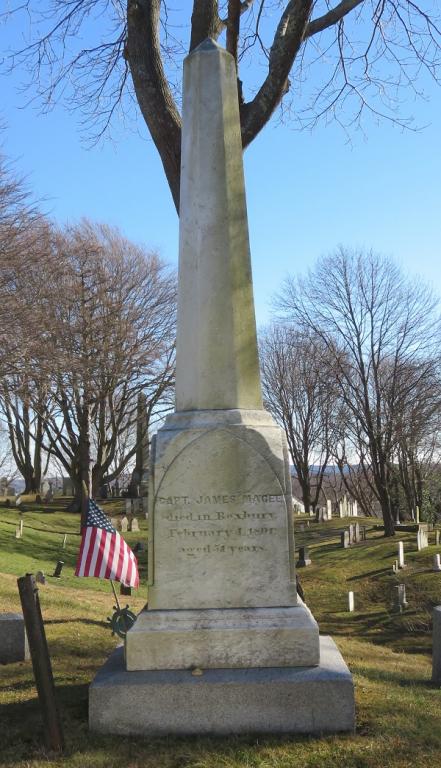James MAGEE/MCGEE
SAR Patriot #:
P-346028
The following information was assembled from numerous sources and cannot be used directly as proof of Qualifying Service or Lineage.
It is considered a research aid and is intended to assist in locating sources that can be used as proof.
State of Service: MA
Qualifying Service: Captain
DAR #: A073079
Birth: abt 1751
Death: 04 Feb 1801 Roxbury / Suffolk / MA
Qualifying Service Description:
- Captain, Massachusets Privateer Sloop "Independence" Nov 1776
- Captain, Privateer Brigantine "Amsterdam"
- Sailed as part of the Penobscot Expedition, July 1779 and was captured at Penobscot
- Captain, Privateer Ship "Gustavus" Dec 1782 bound for Europe
- Captain of Privateer "Astraea" in 1783 bound for France
Additional References:
- MA Soldiers and Sailors of the Revolution, Vol 10, pg 133
- Naval Documents of the American Revolution
- Volume 7, pg 313-314
- Volume 12, pg 6
- Volume 13, pg 404
- Independent Ledger (Boston, MA) January 4, 1779
- Salem Gazette, MA, November 15, 1781
Spouse: Margaret Elliot
Children: James; Charles; Ann; Augustus; Mary; Margaret; Elizabeth; Louisa; Catherine;
Members Who Share This Ancestor
None*
*This means that the NSSAR has no applications for this Patriot on file.
Instead the information provided is best effort, and from volunteers who have either researched grave sites, service records, or something similar.
There is no documentation available at NSSAR HQ to order.
Burial:
Location:
Plymouth / Plymouth / MA / USA
Find A Grave Cemetery #:
Marker Type:
SAR Stake
SAR Grave Dedication Date:
Comments:
- In remembrance of his lost crew members from the Brigantine "General Arnold", James Magee requested he be buried at Burial Hill in Plymouth at the location of the mass grave of his crew. In 1862 Stephen Gale of Portland, Maine had a white marble obelisk memorial gravestone erected at the grave site of Capt. Magee and the sixty mariners "who perished in their strife with the storm"
- Image taken and provided by compatriot David Schafer (MA) member 159259
Directions to Cemetery / Gravesite:
The grave site of Captain James Magee and sixty crew members of the "General Arnold" is located in the Eastern corner of Burial Hill Cemetery in Plymouth MA. The closest cemetery entrance is located at the corner of the S. Russell Street parking lot. Enter the cemetery from the gate at the southern portion of the parking lot. The white marble obelisk is along the slope south of the parking area
